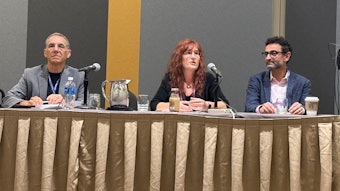Reducing adverse events to improve patient safety
Anesthesiologists can lead the way when it comes to patient safety standards.

Patient harm is the 14th leading cause of morbidity and mortality in the world, according to the World Health Organization. There are roughly 421 million hospitalizations globally each year. Of those, approximately 42.7 million adverse events occur in patients during these visits.
But the number of adverse events doesn't have to be that high, according to Adrian Gelb, MBChB, FRCPC, Professor Emeritus in the Department of Anesthesia and Perioperative Care at the University of California, San Francisco. He will explore how anesthesiologists can help improve patient safety during Saturday’s Ellison C. Pierce Lecture, “Tools for Enhancing Patient Safety.”
Dr. Gelb said anesthesiology has been a trailblazer in the concept of patient safety, so it makes sense that anesthesiologists should play an important leadership role in implementing and maintaining patient safety programs in hospital or clinical settings.
“That really goes back to the founders of the Anesthesia Patient Safety Foundation,” he said. “Researchers at Harvard noted that anesthesiologists made up about 3% of the faculty (of a given hospital) but accounted for 15% of the malpractice costs. They decided they needed to understand this and change it.”
That research eventually led to the creation of the Anesthesia Patient Safety Foundation in 1985, and Dr. Gelb said the organization has since become a leader in improving patient safety.
There are also many tools that anesthesiologists can apply to reduce patient injury and harm during hospitalization, according to Dr. Gelb. One example is a mapping system known as AcciMap. AcciMap is a systems-based approach for analyzing accidents and incidents within complex systems.
“It’s a graphical tool that helps visualize the causal factors contributing to an accident, spanning multiple hierarchical levels of the system,” Dr. Gelb said. “It allows analysis from the highest level down to the individual.”
Another tool is a Failure Mode and Effects Analysis (FMEA), a systematic, proactive method that is used to identify potential failures in a system or process and assess their potential effects and severity.
“FMEA aims to prevent or mitigate these failures before they occur, enhancing reliability, safety, and overall quality,” Dr. Gelb said.
Regardless of which tool is used, most incidents involving patient safety lapses in a hospital setting typically boil down to one thing, according to Dr. Gelb — not following policies, standards, and procedures. This includes the “time out” process used in the OR to review the patient’s identity, the procedure, and surgical site before the first incision is made.
“Standards of care have been shown to reduce patient injury. Yet, we know that clinicians ignore standards in their daily practice for a number of reasons,” said Dr. Gelb.
Ultimately, it comes down to hospitals and clinicians being willing to make changes in their own behavior to improve safety for their patients, he said. And that means involving everyone on every level of the hospital staff.
“Every one of us is an individual, and effecting change in our hospital systems is about effecting change in behavior,” he said. “We need to understand the individuals who are going to be involved. Who are the thought leaders? Who are the facilitators? What are the objections to implementing the safety tool being used? What are seen as the impediments? In your OR or my OR, those factors may be totally different.”








